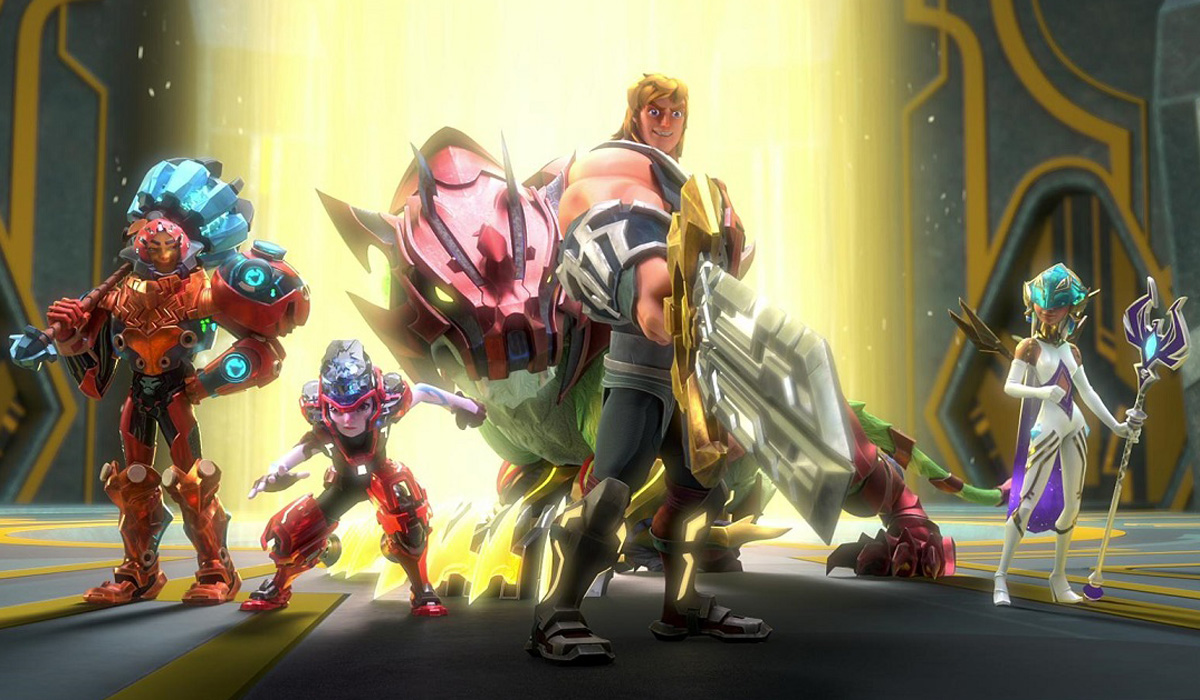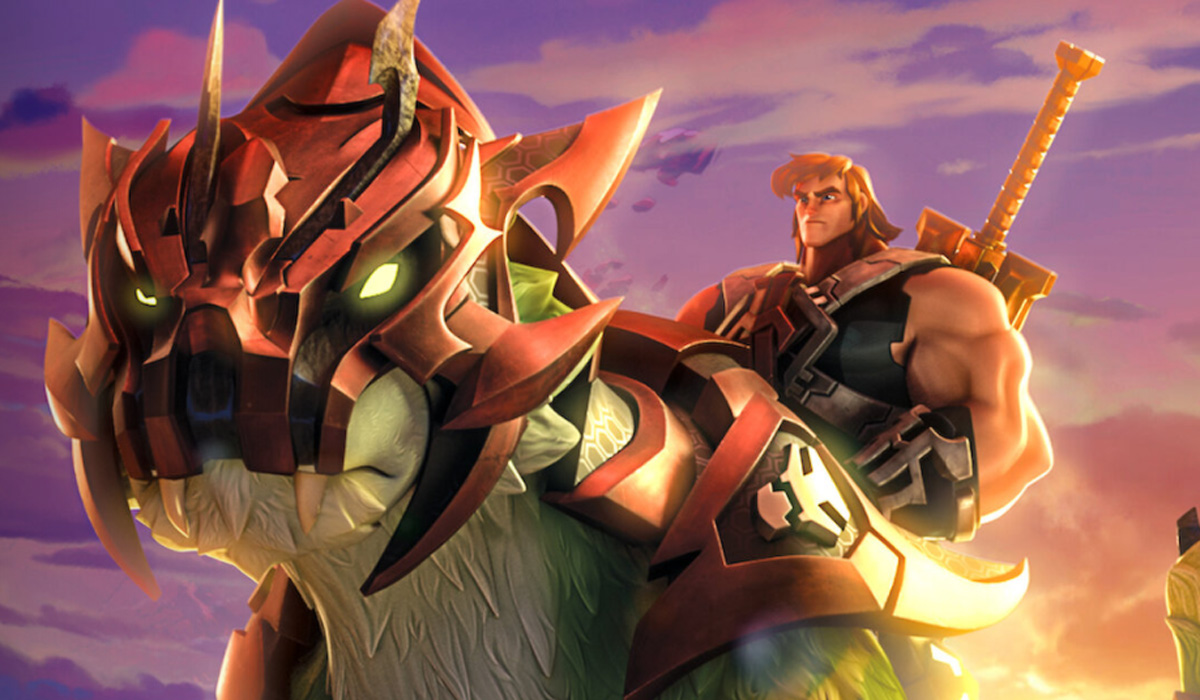Filmation Studios (September 5, 1983 – November 10, 1984), BCI (July 12, 2005), 2 disc set, 215 mins plus supplements, 1.33:1 original fullscreen ratio, Dolby Digital 2.0 Stereo, Not Rated, Retail: $24.98
Storyboard:
He-Man And The Masters Of The Universe is set in the far-off planet of Eternia where the only one who can stop the forces of evil from conquering the planet is a hero named He-Man. He-Man is the powerful alter-ego of Prince Adam of Eternia who transforms into He-Man by evoking the Power of Greyskull, a mystical power that protects the planet. He is joined by the Sorceress of the Castle of Greyskull, his trusty, but easily frightened, sidekick Cringer (who turns into the brave Battle Cat), Orko the clumsy wizard, and two other friends from the royal palace – the inventive Duncan (aka Man At Arms) and the lovely female captain of the guard, Teela. Together they fight against the forces of Skeletor and the “Masters of the Universe” who plot against Eternia from the top of Snake Mountain. Skeletor is a powerful wizard with a hooded skull for a head who vows to take control of Eternia from King Randor. Among his many evil sidekicks are the sorceress Evil Lyn, Beast Man, Merman, Tri Clops, and Trap Jaw. All of these, of course, were Mattel creations that became popular toys.
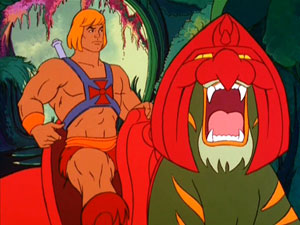
The Sweatbox Review:
He-Man And The Masters Of The Universe is probably one of the many landmark cartoons from the early 80s. It certainly is one of the most remembered cartoon shows along with its sister show She-Ra: Princess Of Power. The show, about a strong hero from the far-off planet of Eternia became a hit as soon as it came out in 1983. It was produced by the up-and-coming animation studio Filmation in association with toy-maker Mattel who had come up with the toys to go along with the show. Rumor has it that Mattel had created toys for Arnold Schwarzenneger’s Conan The Barbarian movie before learning it was rated R. In order to keep their investment, they came up with another fantasy story about a strong, sword-yielding hero in a magical land. Whatever the true story may be, the concept of He-Man was a goldmine for Mattel who reaped great profit from the sale of its toys. Of course, Mattel wasn’t the only company pitching cartoons to sell toys, and other companies like Hasbro had their own shows. The toys became a part of the show and every kid wanted to buy the toys for their favorite characters. I can still remember spending hours playing with my neighbor who owned the entire He-Man toy collection, complete with Castle Greyskull. For hours, our imaginations were sparked by a mythical story filled with swords, magic, and adventure.
At the time, Filmation had already made a mark for itself in the animation world, but was most known for its futuristic films and shows. Some of their realistic human characters were very different from the cartoony caricatures done by Hanna-Barbera and other studios. One only has to look at one of their films like Bravestarr: The Legend to see how they differed from other animated fare of the time. Of course, by 1983 competition was fierce and Filmation was seeking a new long-term commitment to keep the studio open. Many of the animators, writers, and directors were anxious to get back to work on a new project. Lou Scheimer, one of the producers at Filmation at the time, was then approached by Mattel about a fantasy project called He-Man, a project that would become a landmark in the studio’s filmography. Like most Filmation work, the show had a limited budget. The budget limitations would also mean that Filmation would have to resort to reusing character cells and backgrounds frequently to keep costs low. While some of the writers and animators were skeptical of the show and its fantasy concept, it soon became clear that they would be able to do something new. None of this mattered to the millions of kids who watched the show around the world. Occasionally, Mattel would want the writers to introduce a new toy, but the relationship with the toy maker was also friendly and collaborative. As long as the show was a success, Mattel was happy to let them do their job.
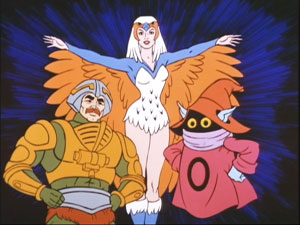
When news that the Filmation library, which includes He-Man And The Masters Of The Universe, had been purchased from Hallmark by British company Entertainment Rights came out late last year, fans eagerly anticipated an announcement of the DVD release. Fans were pleased when the announcement finally arrived that a two-disc Best of He-Man would be released by BCI Eclipse (who entered an agreement with ER to release the show in the US) in 2005, shortly followed by season and volume sets. In the past, the only studio that released 80s shows in season sets was Rhino with Transformers, GI Joe, and Jem!. Other landmark 80s shows were still missing from the list. He-Man was probably one of the most highly-anticipated announcements. Not because He-Man was a particularly great show, but it was a landmark show that became very memorable with its blend of futuristic technology and fantasy. The show even managed to appeal to both little boys and girls growing up in the 80s. Today it seems like 80s animation fans have started to breathe a collective sigh of relief after announcements for Thundercats, DuckTales and Rescue Rangers have also come out. There are only a handful of landmark shows left to be released (The Real Ghostbusters anyone?), and in the spirit of He-Man, I hope to hear an announcement for She-Ra in the near future.
There are probably two types of He-Man fans. There are the people who watched He-Man as a kid, and who remember the show with a certain nostalgic feeling. Then there are the rabid fans of the show who know every single episode and who have eagerly anticipated season set releases. Personally, I fall somewhere in between, fondly remembering He-Man as one of the first shows I remember watching, but also knowing it was never my favorite show. Knowing their market, BCI planned for two different types of releases, a “Best of” collector’s set as well as full season sets. The Best of He-Man And The Masters Of The Universe, featuring the top five episodes of each of the show’s two seasons spread over two discs, was released last month to large sales. Fans who may have not wanted to shell out for full season sets (to be released in October) were treated to the best episodes of the show in a well-crafted, two-disc collector’s set. If this set is any indication, there are great things to come from future sets of the show and BCI.
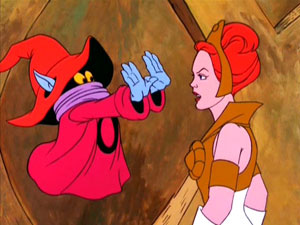
In season one of the show, the writers and directors wanted to focus mostly on the fantasy/action aspects of the show. Because of this, most of the storylines focused on Skeletor trying to take Castle Greyskull or the palace. Prince Adam has to hide his alter-ego from his parents and from Teela who wanted him to be more courageous like He-Man. In the case of this set, the top five episodes from season one in descending order are: “Evilseed”, “Quest for He-Man”, “Prince Adam No More”, “Diamond Ray of Disappearance”, and the number one fan favorite – “Teela’s Quest.” In terms of this set, the show’s best episodes are in season two, but there seems to have been some real gems in season one. For true fans, season one brought some memorable episodes with bizarre villains and plot turns. Here’s a quick rundown of these episodes for those not familiar with them:
5. “Evilseed” – A Lord of Plants named Evilseed causes Eternia’s plants to grow out of control, leading He-Man and Skeletor to work together to fight against it. This is a memorable episode because it was the first time where we see the forces of good and evil fighting together against a greater threat. The highlight for me, in this episode, was Skeletor who is written with a comedic flare. Evilseed is also a memorable character who would later return in the newest version of the show.
4. “Quest for He-Man” – Written by Paul Dini, this episode features Skeletor who wipes out He-Man’s memory and sends him to a far-off planet named Trannis. There, a nasty, oversized rabbit named Plundor rules with an iron fist. This is a very bizarre and surreal episode with a silly plot (giant bunny rabbits?). I guess this one became memorable because of its surreal plot, but it’s not my favorite.
3. “Prince Adam No More” – Also written by Paul Dini, this episode is a great episode that explores the tricky relationship between Prince Adam and He-Man. Prince Adam wants to impress his father, King Randor, and asks to act as his escort on a trip. It’s a great episode because we get to see Prince Adam struggle with his identity since he has to pretend to be a lazy playboy prince to protect his He-Man alter-ego.
2. “Diamond Ray of Disappearance” – This episode written by Robby London was the first to air and it prominently introduces Skeletor’s sidekicks, the “Masters of the Universe.” In this episode, Skeletor obtains a diamond that exiles beings to another planet. It’s also a great episode if you like seeing Teela fight, which she does really well in this episode by He-Man’s side.
1. “Teela’s Quest” – Undoubtedly the best episode of this first season was this one, once again written by Paul Dini. We learn that Queen Marlena was an astronaut who crashed on Eternia. We also learn about how Teela came to be raised by Man at Arms and about her mother when she goes to an Oracle in the Crystal Sea to find out. I’ll try to keep this a secret in this review, but avoid reading the summary for “Teela’s Triumph” if you don’t want to find out.
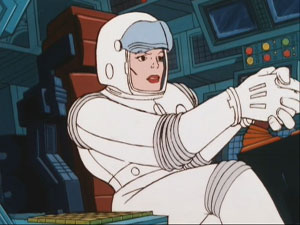
The first season of He-Man was already a hit when Mattel ordered a second season of the show from Filmation. Before finishing the first season, writers were already at work on stories for the second season of the hit show, but they faced a new challenge. The first season had focused largely on Skeletor trying to take over Castle Greyskull, a storyline that was nearly exhausted. Writers were now eager to explore the characters with more depth and address some issues that had barely been discussed in the first season. This led to great character-centric episodes such as “Teela’s Triumph”, “The Problem with Power” (dealing with He-Man), and “The Origin of the Sorceress.”
5. “Into the Abyss” – In this episode written by Robert Lamb, Adam refuses to take his lessons with Teela seriously. In turn, she decides to disguise training with a game of Hide-and-Seek, but she falls off the ledge of the abyss surrounding Castle Greyskull. This is a good episode that further explores the relationship between Adam and Teela. It is also interesting because it shows us what happens in the abyss (the source of the Power of Greyskull) when Adam calls on the power of Greyskull to become He-Man.
4. “Teela’s Triumph” – Once again, an episode prominently featuring Teela makes it into the top five. In this episode, The Sorceress decides to go visit Teela, but is accidentally sent to another dimension by Skeletor who has come up with a new weapon. The Spirit of Greyskull then tells Teela that the time has arrived for her to take the Sorceress’ throne in Castle Greyskull. He-Man also disappears and Teela is left alone to defend the castle from Skeletor. This is a great Teela episode because it shows her defeating Skeletor without He-Man’s help.
3. “To Save Skeletor” – This is another episode where He-Man and Skeletor must fight together to defeat a greater evil. In this story written by Paul Dini and Beth Bornstein, Skeletor calls on the power of Sh’Gora, an evil creature from another dimension. When Skeletor loses control of the creature, Whiplash (one of his henchmen) runs to the Palace to ask King Randor and He-Man for their help.
2. “The Problem with Power” – In this popular fan-favorite, Skeletor comes up with the ultimate scheme to get rid of He-Man once and for all. He uses General Tataran to fool He-Man into thinking he has killed an innocent human being (Tataran has no heart). In a moment of profound guilt, He-Man decides to return his power back to Greyskull and to toss his sword away. This leaves Teela to face Skeletor on her own while He-Man is nowhere to be found. One of my favorite images of He-Man is in this episode, when he looks at his sword filled with guilt before tossing it away. It’s probably the He-Man episode with the most emotion in this set. I consider this to be my favorite He-Man episode, and I have to hand it to Bob Forward and Leslie Wilson who wrote a great script, the animators, and Gwen Wetzler the director who gave it just the right emotional treatment it deserved.
1. “The Origin of the Sorceress” – Finally, this last episode was considered to be the best He-Man episode from season two. This episode is the first one I noticed where a Mattel toy was blatantly introduced with Stridor, a mechanic horse companion for He-Man. In this episode, He-Man has to fight against Morgoth the Terrible, an ancient wizard who was last banished when the Sorceress first became who she is. The Sorceress decides to tell He-Man about how she discovered the truth about Castle Greyskull and how she obtained her present form. I can see why this is a fan favorite because Sorceress has always been a mysterious character and her background was never explored in depth until this episode.
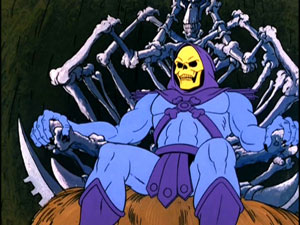
The writing on He-Man was never consistent, and some writers were certainly better than others. The plots were rather basic in format, but every once in a while a great story would appear. There was also the added challenge of writing a fantasy show that also had to promote toy sales for Mattel. According to writers, Mattel did not try to interfere with the show, but every once in a while a writer would have to introduce a new character Mattel had created. Writing a show for kids also meant that the violence could never be too extreme and the good and evil had to be clearly defined. The writer that appears the most in this set is Paul Dini, an excellent animation writer who would later work at Warner Bros. doing Batman:TAS and Justice League. Other writers like Janis Diamond and Larry DiTillio would also go on to do some great work on television. DiTillio would eventually go on to write for another hit animated show, Beast Wars: Transformers which came out in 1996. Diamond would go on to write and produce for the Law & Order franchise.
Looking back at these ten episodes, it’s evident that some of the best stories were female-centered stories. It’s evident that writers and directors had a great time doing episodes for these strong female archetypes of Teela (the warrior princess) and Sorceress (the mysterious witch). Teela was an excellent character to write for and she provided a great role model for young girls with her strength. Here was a woman who was equal to any man in terms of her fighting and who could stand side-by-side with He-Man. Sorceress was also a great character because of the mystery surrounding her and the great power she displayed on the show. It’s no surprise that Filmation would later produce She-Ra with its strong female center. According to the writers, the show also enjoyed a wide fan base of young girls who enjoyed fantasy shows. Of course, there were also some women behind the scenes. Director Gwen Wetzler ties with Steve Clark with the most number of episodes directed by them in this set. Writers frequently requested Wetzler’s direction and tried to time their scripts to her rotation. Wetzler would later take her female sensitivity to two other hit shows focused on girls, Jem! and She-Ra: Princess Of Power.
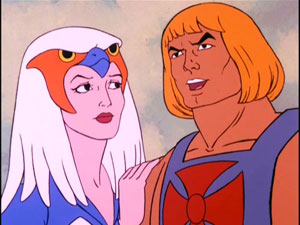
Is This Thing Loaded?
The special features included in this release really mean good news for fans of He-Man and for future sets in this series. Viewers are treated to backstage interviews, trivia, full episode scripts, and collectible cards drawn by some of the best comic book artists out there.

The trivia is provided as “Orko’s Fun Facts” and they are actually quite fun. Some of the trivia includes the names of who animated certain sequences, deleted story ideas, and animation errors.
The 2 collectible 4” by 6” art cards are designed by Bruce Timm (of He-Man and Skeletor) and by Adam Hughes (of the Sorceress). These cards are labeled to be 1 and 2 of 16, which promises 14 more collectible cards spread across future volumes. They look great and provide a fresh take on the He-Man characters. The back of these cards provide a brief bio for the artists.
Of course, the meat of the special features is contained in the two new documentaries that look into the show’s top five episodes from the two seasons. These documentaries feature clips from the shows, and interviews with writers, animation directors, artists, editors, and even Mr. Lou Scheimer himself.
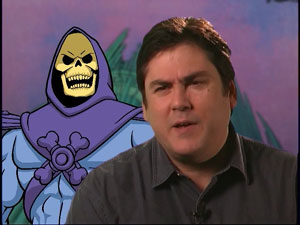
On “Behind the Best of He-Man And The Masters Of The Universe: Season 1” (29:56), we are treated to a countdown of the season’s best episodes starting with number 5 and gradually making our way to number 1. In this documentary, viewers will learn how Barney Cohen (writer) came up with the idea for “Evilseed”, hear Tom Sito (animator) discuss the show, find out what inspirations Paul Dini (writer) got from Matt Groening, learn what Filmation bosses wanted from their villains, find out what episode is the most touching according to Lou Scheimer (producer), hear Gwen Wetzler (director) talk about He-Man’s doubts and vulnerabilities, go in depth into He-Man’s identity crisis, hear Joe Gall (editor) discuss about how he first heard about He-Man, learn about Mattel’s involvement with the program, find out what the show’s writers thought about continuity, and see Lee Clevenger (a He-Man art collector and fan) show off his storyboard cell – and these are just the highlights!
On Disc Two, we get the second documentary “Behind the Scenes of He-Man And The Masters Of The Universe: Season 2” (35:28) which discusses the second season that ran between 1984 and 1985. Here, we get to see Robert Lamb (writer) talking about He-Man’s powers and his relationship with Teela, hear Rick Gehr (editor) discuss Orko’s voice, Janis Diamond (writer) talk about the strong female characters on the show, Larry DiTillio (writer) discuss the sorceress and She-Ra, Gwen Wetzler discuss her role as a female director, Paul Dini (writer) talk about story pitches such as “Orko finds a baby dragon”, Larry DiTillio explaining why the French were afraid of Skeletor, Tom Tataranovicz talking about his Prince Valiant inspiration, J. Michael Straczynski explaining his work on “Origin of the Sorceress”, and once again Lee Clevenger (He-Man art collector and fan) showing off his animation cells.

I greatly enjoyed both of these documentaries which play like a He-Man television special. It was great to see people who had worked on the show speak about the show highlighting its strengths and weaknesses. Most seem to really have enjoyed their experience working on the show which did help them in their future careers. While seeing Paul Dini and Larry DiTillio talking about the show was a plus, I actually enjoyed Gwen Wetzler’s comments the most. She really did seem to enjoy the show and appreciates what it meant to her career. While the end credits are rolling, she mentions how she didn’t even know there were so many He-Man fans out there anymore until they contacted her for the interview. The only people I would like to see more of are members of the voice cast. However, they do appear in the trailer for the next He-Man set, so I assume they will be interviewed.
You’d think that the extras would have ended on the documentaries, but I am glad to report that someone finally made use of the DVD’s ROM capabilities. Here, fans are treated to two original, scanned scripts for some of the show’s best episodes. We have full scripts (including comments and cast listings) for “Teela’s Quest” and “Origin of the Sorceress.” Scanning the scripts gave me a glimpse into the script-writing process and into some of the stuff that went on behind the scenes (including the introduction of Strydor – a Mattel toy). While I didn’t read the full script, I was glad it was there and die-hard fans will love going through everything. These scripts are provided as PDF files of the original, typewritten scripts which have been scanned.
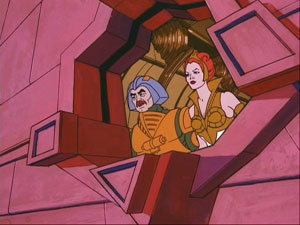
Case Study:
I love the packaging for this release! He-Man has been released in a two-disc digipack case which also features a cardboard slipcase. On the cover we see He-Man, his allies, and the Masters of the Universe, all looking great and colorful. Inside, the package is divided into Castle Greyskull and He-Man on the left (Disc One) and Snake Mountain and Skeletor on the right (Disc Two). As mentioned, the collectible art cards are also included here as well as a guide to the ten episodes found on this release.
Ink And Paint:
I was stunned and my jaw literally dropped when I watched the first few minutes of this excellent set. The image quality of this set was beyond my greatest expectations. It could have been because I had just watched the new Thundercats release, but after further review, I noticed the extensive cleanup work done by Entertainment Rights and BCI for this release. The image was excellent considering this show came out over twenty years ago. The colors look as vivid as they have ever been, the background and cells are clean, and I noticed very little dust and grain on these prints. That’s not to say that the image quality is perfect (after all, it has been over twenty years), but it is more than I could have expected for this release. The first season episodes did seem cleaner than those found on the second season, and that could be because the second season episodes have not yet undergone the cleanup process. However, even the second season episodes look good. I did notice some cell shadows on the prints, but I’m willing to take that over extensive dust and grain.
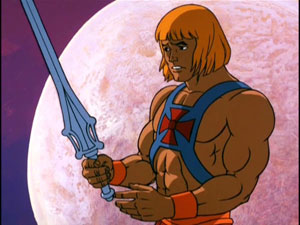
He-Man was produced with a small budget for an animated show. Coming from a small studio, producers, directors, and animators had to work together to come up with cost-saving techniques. The animators reused cells, character movements, and action scenes from previous episodes. When I took screen captures for this show, I noticed many shots from different episodes where He-Man had the same position while standing in front of a different background. Often, and this is more noticeable in the first season, characters speak off screen or with their back to the viewer. Orko doesn’t even have a mouth, which also helps because there is less to animate. Overall, animation-wise it was a simple show, but it was one with a long-lasting impact.
As far as the way episodes are presented on this disc, I have one issue with the “Play All” feature. One can choose to play the episodes individually (with chapter stops) or with the “Play All” feature. I was thrilled that the release included chapter stops (3 per episode), but I was unable to skip to the next episode on the first disc (where each episode was a separate title). This only worked on the second disc where all episodes were part of the same title. It got annoying getting to the end of an episode and having to forward through the end credits.

The show is presented in its original 1.33:1 fullscreen aspect ratio.
Scratch Tracks:
The audio for this release is the standard Dolby Digital 2.0 track. I had no problems with this track, but I am a bit curious about why this was only released in English and without subtitles. It could be because BCI only has the rights to release this in the US. What really shines in this set is the score, which sounds as clear as ever. As far as the voice actors, they’re not my favorite actors. I always felt that He-Man’s voice (John Erwin’s) was wrong for the character. He always sounded a bit like John Wayne or like he was in a bad western. I was also never fond of Sorceress’ voice either (Linda Gary’s – who did a great job with the other female voices) because she always sounded a bit like an airhead. Still, there’s nothing I can complain about that 20 years after the fact. I’m just pointing this out because it always bothered me.

Final Cut:
Watching these ten episodes of the original He-Man show have allowed me to rediscover this series. I have never been a die-hard fan of the show, but I was excited about watching it again and seeing something that had an effect on me as a kid. It brought back fond memories of playing with plastic swords in my backyard and with Battle Cat in my neighbor’s house. He-Man may not have been a deeply profound show, but it was a show with a lot of action, adventure and great morals for kids. This is also an excellent opportunity for a new generation of fans to experience this story in its original format (forget the most recent version). I have also had mixed feelings in the past about “best of” sets versus “season sets.” I always felt that studios were forcing us to double-dip on these releases, but in this set there is so much added value that fans should definitely consider picking this one up if they like the show. If you’re a He-Man fan, you should pick this one up along with the season sets, at least to watch the documentaries (worth the price). If you’re a casual He-Man fan who will not be getting the season sets, I highly recommend getting this set because it has been produced with great care. Overall, this set manages to please everyone and gives me great hope for what is to come from BCI and future He-Man sets.

 | ||
 |









